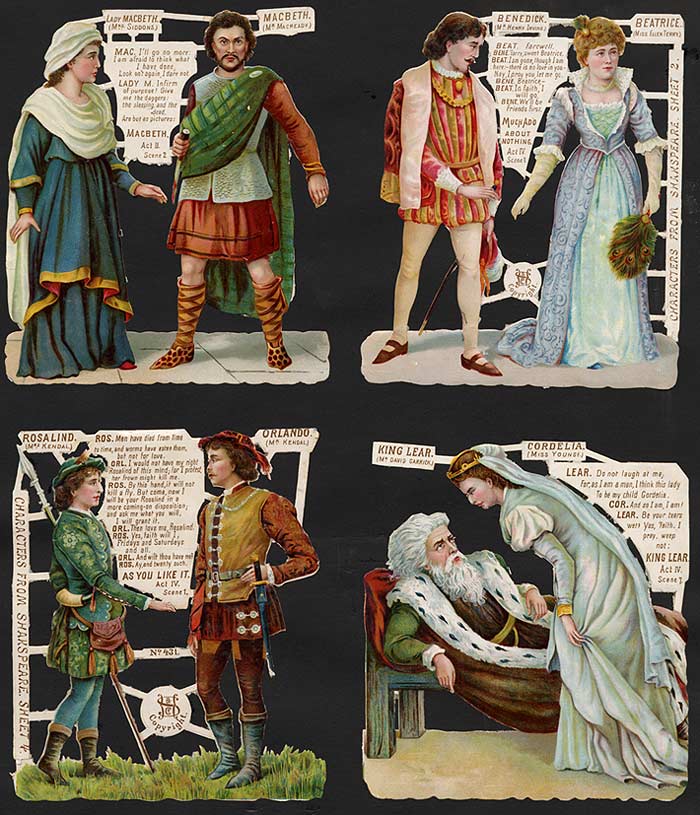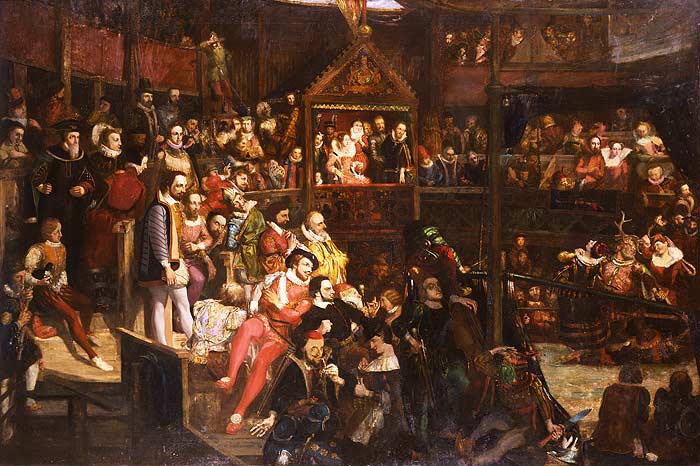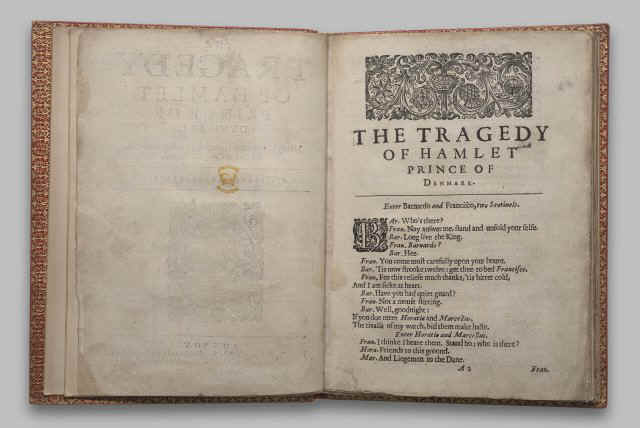|
|
 |
Book review:
This book integrates Jungian type
theory with literary theory as it analyzes several Shakespearean plays. Tucker confronts many thinkers who show resistance
to using type. In response to their fears of stereotyping, Tucker makes a strong
case for the idea of using type as a “tool” for better understanding of
characters, ourselves and others. In citing
Montaigne, Tucker reminds us that human beings are full of inconsistencies and yet we can
see some part of ourselves in almost every other person, real or fictitious. On Shakespeare
There has been much speculation on who
Shakespeare was – the historical
Shakespeare as well as finding Shakespeare in his writing – and attempts to pin him
down through his plays and poems have also revealed great inconsistencies. Even if primary sources, such as drafts, notes,
personal letters, biographies and autobiographies existed, Tucker doubts we would truly be
able to know who Shakespeare was.
Not only are we unable to capture the essential
author while pursuing our quarry through his daily Protean shifts of perceptions, moods
and attitudes, but also, in a sense, we cannot ever know precisely how our subject felt on
a particular day at a particular time about a particular subject when a particular line
was written. (10). However,
it may be possible to understand aspects of the author. In scholarship, little use has been made of
Jung’s typology in this regard, although literary analysts are comfortable discussing
Jung’s archetypes: the shadow, anima,
animus and persona. Individuating, or
becoming oneself, involves both recognizing one’s psychological type as well as
wrestling with archetypical conflicts. Because
Jung believes the personality of each of us is based on two of the four functions –
intuition, sensing, thinking and feeling – our primary and secondary functions
determine how we deal with the world. Our
dominant traits often blind our ability to comprehend others, a device often employed in
Shakespeare. Writers work towards setting
different characters in opposition to create these conflicts. In Othello, for example, Shakespeare pairs
Iago, the cold rationalist, with Othello’s emotional idealist. In
reading and writing characters, there are three levels at work: our view of reality based on our knowledge of real
life people, characters as created personalities, and the actual personalities of both the
author and the reader/viewer. In tandem with
this, are the different views of understanding what knowledge is. Since the modern era began, we have had with us
scientific explanations of nature, society and individuals, mainly based on figures and
statistics. This has carried over to the
modern literary critic who turns to psychoanalysis to explain people’s behavior. In the postmodern era, we have come to understand
that there is no objective knowledge; information is always filtered through the
subjective mind of the observer. Tucker leans
towards a critical realism in his work, a balance of the previous two views. All knowledge is subjective but external phenomena
can be understood in a “normative” manner; that meaning can be agreed upon by
subjects who share a common view of life. Tucker
warns that some characters are easier to type than others.
All the same, he finds certain consistent themes in Shakespeare that reflect
the psychological tendencies in the author himself. He
believes in particular, that there is a repetitive conflict between thinking and feeling
in Shakespeare. Among them, -
A need to validate love -
To avoid political upheaval -
To return to an Edenic state with nature -
The necessity of reacting to chaos, both
inner and outer (relationships and within the individual psyche)
This
is partly based on the Renaissance view of the outer experience reflecting the inner world
and vice versa. Tucker believes that the
chaos outside must have called forth complex, deeply rooted reactions from the feeling
function in Shakespeare’s psyche. From
that, parallel actions and counteractions issued from his thinking function.
Philosophy
and literature both ask questions about how to live our lives. Literature shows us how to deal with unexpected
reversals, inevitable disappointments, undeserved tragedies and ineffable mysteries. Philosophy seeks answers through “right
reason” in the hope that through learning the “truth” people will be able
to become more educated, more civilized so that society will order itself in such a way
such that more people can achieve happiness and society will flourish. The problem is that we cannot agree on what right
reason is; there are too many differing views. These
differing views, Tucker says, may be simply due to personality differences. He cites Montaigne again who tells us that human
beings are never able to see reality in its totality.
Because of the limitations of the human mind, and also perhaps due to being
walled within our dominant type, we are troubled by the need to make choices. No one person can be in control of every
situation. (36). Hence, in Shakespeare, we
have the elements for grand tragedy. Othello
As we
have said, there is a recurring conflict in Shakespeare between the thinking and feeling
functions, and Othello serves as a fine example.
What happens when a character flips between the two functions is a loss of
identity, both externally and internally. In
other words, the thinking-feeling nexus is central to the protagonist’s
disintegrating self. Othello personifies
romantic idealism and places great faith in human values of love and war, as they are
romantically conceived. His love for
Desdemona is at the center of his life, so much so, that he conjoins the matrimonial with
the military, when he greets her as, “my fair warrior”, after she has
courageously left her home to be with him. But
more than this, he is remaking her in his own image; she has transformed into his anima,
the archetype of the ideal being within a man’s psyche, in female form. Put another way, he recognizes a soul mate in
her. Iago, however, as a strictly rational T,
does not believe in love. In light of his
base cynicism, he only sees lust. Once
Iago’s pride has been stung, he actively begins to destroy their ideal love and
Iago’s bitterness injects poison into Othello’s romantic idealism. He goes after Othello’s intense need of
loyalty and Othello’s inferior function, T, arises and begins to put him in the
shadow's grip. Because Iago knows Othello
believes him to be tested and loyal, Iago is able to dangerously disrupt Othello’s
psychic stability. Othello’s language
even starts to resemble Iago’s; he no longer “feels” something is true, but
he “thinks” it is true. And yet,
even as Othello’s suspicions grow, when he sees Desdemona, he is overcome by strong
feeling that has no rational basis. Thus, the
F and the T are at war within him, faith and cynicism, vacillating between the two, within
and without. Many
critics have asked what Shakespeare’s intention may have been in portraying such
doomed lovers. He seems to be asking us to
consider what happens when we need to idealize the love object. This same theme runs through the Dark Lady
sonnets. Othello succumbs to Iago’s
betrayal and his own jealousy, and murders Desdemona, only to discover she was innocent. When he learns she was true to him, his feeling
function reasserts itself and he kisses her before killing himself. Like other fated Shakespearean lovers, he hopes to
be reunited with her in the afterlife. And
yet, in Shakespeare, we have a complex view of life and we cannot say for certain if the
bard wanted to ultimately emphasize Othello’s return to faith, to offer some glimmer
of hope to his audience, or to return to the idea of abiding love in marriage. What we can say is that for Shakespeare, there
was a strong fascination for the dichotomy of idealization and disillusionment in love. Hamlet Although
the most haunting conflict between T and F in Shakespeare may be in Lady Macbeth, it is
more deeply explored in Hamlet. Lady
Macbeth experiences complete psychological break down because she attempts to suppress her
capacity for pity and sympathy in order to do what she must to get power, which is to
become ruthless and ambitious. Since it is
impossible to blot out her dominant F function, the only course left open to her is
madness. In Hamlet,
chaos reigns. Hamlet’s father has died
suddenly (enough of a shock), his mother has remarried (too quickly), and to Hamlet’s
uncle (whom he dislikes). Then there’s
the ghost. Tucker
points out that although people may try to fortify themselves against misfortune, make
sincere promises to others, or claim to have the best of intentions, when under attack, no
one really knows, including the self, what one will do.
Plans and purposes go awry in Hamlet and Hamlet’s inner division
is obvious from the first scene. Other
characters are divided as well: Claudius
commits one murder for the woman he loves and power, yet suffers guilt; he is no simple
villain. The queen is torn between loyalty
for her son and for her new husband. Ophelia
cannot survive the murder of her father by the man she loves. She degenerates into insanity when Hamlet is
banished. With such dysfunctional characters
it becomes clear that unity of self is crucial for mental equilibrium. Hamlet struggles for unity in attempting to remain
rational and so follows a Stoical path in the midst of marital celebrations at the castle.
Stoicism in the Renaissance was uncommon; rather people of Shakespeare’s
time valued the ability to remain graceful under pressure.
But because Hamlet is a thinking type, he struggles to hold onto his intellect
within the chaos. Coleridge
offers insights to Hamlet’s make up:
In
stressing Hamlet’s tendency towards abstractions, generalizations and principles
(thinking function) and his thoughts, images and fancy being more interesting to him than
reality which may be the cause of his procrastination (intuition function), we see two
interlaced sides of his personality. It is
difficult to say which is the dominant function and which is secondary. Both affect his behavior profoundly. On the other hand, we could say his sensing
and feeling functions are much less developed. Unlike
many young men of his status, Hamlet is not praised for his expertise in hunting or other
outdoor activities, although he engages in fencing at the end. He has trouble communicating his feelings for
Ophelia and to his mother. Tucker
postulates that the reason Hamlet is unable to execute Claudius sooner is due to an
undeveloped S, the action-taking trait. His
psyche recoils from acting and hides within his preference for speculation. Ophelia hints at an earlier time when Hamlet was a
healthier, unified self. In time of crisis,
his F and S begin to assert themselves and Hamlet recreates himself as a Stoic in order to
buy time, to cope. But as the play
progresses, dark deeds begin to conspire against him; he finds himself trapped in psychic
turmoil. Inner conflict affects the outer
– he breaks with Ophelia, is at war with his mother, then kills Polonius. All these turns obstruct his ability to do what
must be done. His F and S functions create inner chaos as they attempt to overpower his T
and N. Coming
upon Ophelia’s funeral, Hamlet’s F leaps to the forefront and begins to
galvanize his capacity for S, action. He
literally jumps into the grave, willing to fight Laertes to embrace Ophelia. Previously, Hamlet had followed a pattern of
brooding, logically analyzing, exploding in wild outbursts, then returning to
contemplation. In the last scene, he is
able to kill Claudius when it becomes clear through Laertes that the king has arranged for
Hamlet to be poisoned and his mother is dying through the king’s folly. Opportunity, God or providence combine to show
Hamlet a noble way out of his personal hell and his N-T complex combines with S to allow
him to perform conscious action. The throne
of Denmark is cleansed. Many
have asked, why must Hamlet die? To pay for
mistakenly killing Polonius? To satisfy the
Renaissance idea of God’s justice? The
more modern secular view is that Hamlet has nothing to live for. His father, mother and Ophelia are dead. Or, in light of Jungian theory, is perhaps
Shakespeare suggesting that inner unity is impossible?
That our quest for selfhood doomed from the outset? Hell, as Sartre said is other people; for
Shakespeare, hell is the self. Jung
holds out hope for individuation, the concept of the self knowing how to guide itself
along the path to fulfillment. He believes
there can be no higher calling than to seek harmony with natural laws that will reveal the
direction leading to the optimum life. His
central emblem was the mandala, which for Buddhists represents continuity, and for Jung
became synonymous with the psyche’s center which can be approached but never reached. The process of becoming an individual is an
ongoing project. For
many modern thinkers, the idea of “finding oneself” is problematic; rather most
people see life as a journey, a linear progression.
But this implies a journey’s end and completion. In the end, the image of the mandala offers a more
uncertain paradigm One of
Jung’s advocates, Joseph Campbell, takes the Western conception of individuation
further when he suggests, “follow your bliss”.
This has been seized upon by pop psychology which would have us believe we
can have it all, a message we would all like to hear.
Shakespeare
is more realistic. Hamlet presents the
disarming possibility that conflicting currents in the self cannot be redirected into a
smooth river. And worse, our quest will never
lead to our dreamed of utopia. Interestingly,
Hamlet’s quest for happiness is more in line with Freud than Jung. But we must ask ourselves, why do we need
happiness? From birth we seek gratification
and pleasure, yet the world acts to thwart our efforts; we die, tragedy strikes, we cannot
avoid conflicts with others. Yet we cannot
cease from trying to find our paradise and so in the meantime we create strategies for
coping and buying some time. Jung’s
view in one aspect may hold true; we may not be able to attain total realization of the
self, but we can achieve higher and higher levels of awareness. Hamlet cannot be happy but Shakespeare may be
saying death is merciful. He is “adrift
with no psychological rudder”. (129). He
dies with a loss of personal identity. His
psyche has become a vortex of magnetic fields – the four functions out of balance. Again,
as in several of his other works, in Hamlet, Shakespeare offers no pat resolution
of the play's deep problems. Shakespeare
would return to this idea in several other plays, most notably in King Lear, as
well as in Troilus and Cressida, Othello, Coriolanus, and Antony and Cleopatra. Evidently it disturbed him as much as it disturbs
us still today. |
 |
Book review: Sally Porterfield's Jung's Advice to the Players: A Jungian Reading of Shakespeare's Problem Plays A Jungian reading of the plays, like other psychological readings, works on at least two levels. First, what happens in the play can be related to what happens in real life. Characters both represent themselves as much as they call to mind archetypes. Too literal a reading can prevent a reading from missing the main point. Second, in the Renaissance, drama was much closer to the medieval concept of the mystery and morality plays. Beneath the cloak of Renaissance individuality lies a character's strong allegorical qualities. For instance, in Iago we have a richness of layering; we see the complex villain as well as the simple devil. The same goes for the psychic complexity of plots. Ultimately, however, all the separate pieces merge into an artistic whole. In this volume, the author examines a specific critical axis in four of the plays: the Shadow, in Measure for Measure; the "lost boys" in Troilus and Cressida; the Anima as Trickster, in All's Well That Ends Well; and Imperfect Parents in Hamlet. |
 |
Queen Elizabeth I at The Globe |
 < http://
< http://